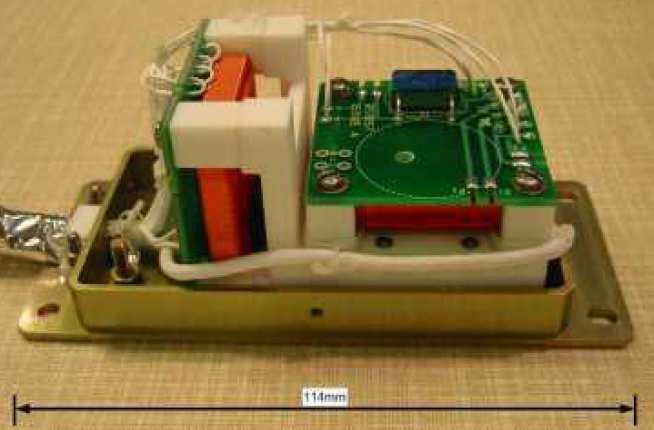
The DoubleStar outboard sensor couples a lightweight design (200g) with excellent, low, noise performance. The sensor and accompanying electronics were designed and built jointly by Imperial College and Ultra Electronics Ltd.
Key Features
- measures magnetic field in sensor x, y and z orthogonal axes
- improved linearity through operation in null field mode, where current feedback nulls out the field measured in the sense coil
Mass optimisation through:
- using only 2 fluxgate ring cores; 2 orthogonal, square sense coils per ring core, allowing field measurement in both directions
- common sense/feedback coils
Minimisation of thermal effects
- sensor and harness are wrapped in insulating MLI
- aluminium baseplate allows thermal coupling to boom to avoid thermal gradients as the spacecrafts goes between sunlight and earth eclipse
- sensor temperature is monitored by non-magnetic thermistor
Optimisation of sensor performance
- since there is a generous power budget for this mission a high-power 15kHz drive weveform gives very low sensor noise performance
Key Performance measures
- noise density < 5pT/√Hz over the temperature range from -35ºC to 25ºC
- band noise < 11 pT rms in the range 0.1 to 10Hz
- digital resolution 15pT in most sensitive range (±128nT)
- scale factor drift < 40 ppm/ºC
- offset drift < 0.016 nT/ºC
- sensor operating range: -80ºC to 70ºC
- electronics operating range: -20ºC to 50ºC
Quick Links:
Useful Links
DoubleStar Links: